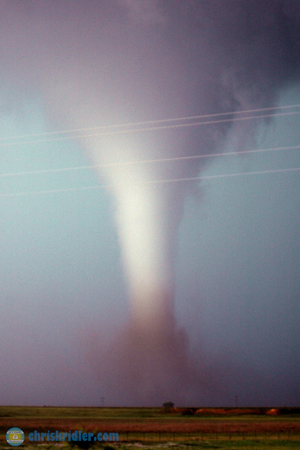
Tornado chasers don’t just come from the Plains, or places close to that fertile plot of tornado territory.
Those who seek to view what is perhaps weather’s finest work of art visit from just about every part of the globe. Most do so during the few-month peak of tornado season. Chris Kridler is one of them.
This type of storm chasing can yield results that keep folks like Chris going back year after year, but also often brings extended periods of downtime. While chasing in this way, one can’t just go home after an event to wait for the next one in a few days (or longer) time.
A writer, editor, photographer and videographer, Chris resides on the East Coast, but she has “chasecationed” in the Plains every year since 1997. She’s currently in a holding pattern for this year’s expedition.
I asked Chris some questions about her experiences as a chasecationer, experiences that helped her create a magnificent short documentary called “Chasing Reality.”
Q: As a writer/journalist/photographer by trade, did your interest in tornadoes spring up as an offshoot of that or did you catch the bug prior?
Chris Kridler (CK): My interest in storms and tornadoes grew out of a sense of curiosity and childhood influences. I grew up in Pennsylvania and had to go to the basement a few times as a kid when a tornado was in the area, and I found those occasions more exciting than scary. I also was in love with the tornado scene in “The Wizard of Oz.” I was doing an online search for tornadoes when I found a storm-chasing tour in 1997, and that first experience got me hooked on storm chasing.
Q: Do you have any professional training in meteorology? On a similar note, has your interest in storm chasing built on your knowledge-base of weather in significant ways?
CK: I have no professional training in meteorology, so I’ve taught myself as much as I can about severe weather. Early on, other chasers helped a great deal, and the Internet offers a wealth of information on forecasting, as well as data. I still have a lot to learn — that’s one of the joys of chasing storms, because every storm is an education — but I’ve learned a great deal because of my passion for the hobby. At times as a reporter, I’ve also enthusiastically covered weather-related subjects, another opportunity to learn.
Chris Kridler is an award-winning writer, photographer and storm chaser whose chase accounts can be found at SkyDiary.com and whose blog and other photographic work are featured at ChrisKridler.com. As a journalist, she’s covered a variety of topics, from space shuttle missions to publishing. Chris’ photographs have appeared in several magazines and books, including the covers of The Journal of Meteorology, the book Winderful, and Wallace and Hobbs’ Atmospheric Science textbook.
Q: We recently did a Q&A with Amos Magliocco. He’s seemingly your more typical regular when it comes to storm chasing, as he resides in Tornado Alley. You grew up in Pennsylvania and live in Florida. What drives you to keep going back? Are there many like you?
CK: There are more and more storm chasers, and a lot of them come from outside Tornado Alley. Apparently, weather geeks come from anywhere, and from any background. I’m friends with several chasers from places outside the Alley, including New York, Virginia, Australia and Canada, and we frequently meet up during chase season. Florida has its own chasers. Its Lightning Alley is part of the reason I moved here.
Why do I go back to the Plains every year? The magnificent supercells there are like nowhere else on Earth, and I never tire of the challenge of puzzling out their behavior. While I absolutely love storms, I also love the experience of chasing: the freedom of driving through the austere landscape, my movements dictated by nature, with so many opportunities to pause, take photos and marvel at the mechanisms of the sky. There’s also a little bit of that heartland-of-America appeal to seeing the small towns that have literally weathered decades of being blasted by that prairie wind.
Q: How many times have you voyaged to the Plains in search of tornadoes? How long is your usual stay? Do you try to time your trips to a pattern that seems likely to produce tornadoes, or generally choose dates in advance and stick to them?
CK: This will be my 16th season chasing storms. Usually I go for two to four weeks. Longer trips are great, but I’ve had work and other obligations in the past. I’m a freelancer now, but I still have work, so I’ve had moments of frustration when I couldn’t go for, say, an April outbreak. I am more flexible at the moment, so I’m trying to time my trip to a productive weather pattern.
Q: The demographics for storm chasers appear, at least, to be heavily weighted toward men. Have you come across many other women chasers? Do you notice more or less women chasers as the activity goes “mainstream”?
CK: I am, happily, seeing more and more women chasing storms, though they’re still in the minority. I’m not sure the hobby will ever lure equal numbers of men and women, just because a lot of women aren’t necessarily into the geeky details and endless driving, and they may have more obligations at home. Maybe a sociologist should address that question. There are plenty of smart and successful female chasers, but right now, it’s like any geek culture (and I mean that in the best way possible) — male-dominated.
Q: Your short documentary, “Chasing Reality,” is a superb look into what storm chasing really is compared to how it’s most often portrayed. How do you personally feel about the downtime, driving and busts? Has it become easier or more difficult to keep yourself occupied during those occasions over the years?
CK: I really enjoy driving, though it gets exhausting, especially as I’m by myself for much of the time. It’s the one essential part of chasing that I think gets lost sometimes in chaser TV shows, which are, understandably, edited to show the most exciting moments. I bring along music and books on tape, along with AAA Tour Books, so I can find quirky roadside attractions during down times. I also caravan sometimes with other chasers, and radio chatter makes the hours go more quickly. As you know from chasing storms, there are lots of hours on the road for those few minutes of seeing a tornado. I put almost 12,000 miles on my car last year in three and a half weeks.
Busts are also part of the chasing experience, and I don’t mind them too much unless I miss something really extraordinary. On those days, I want to pound a wall. But after a few primal screams, I just drive to get into position for the next target.
Q: Have you ever been skunked for a whole journey out? If not, do you have a particular day in which you really feel like you dropped the ball? On the opposite note, do you have a “best” or most memorable trip, or day within a trip?
CK: Fortunately, I’ve seen storms on every trip, but they weren’t always fabulous, and sometimes the pattern kills everything (2006 comes to mind). There have been a couple of days that were extremely frustrating. One was May 11, 2000, when I was chasing with a friend. We did a fine forecast that got us on a beast of a storm in Waterloo, Iowa, and while we saw tornadoes, we were out of position on the storm the whole day — we were never close enough, and we missed a lot of the intense stuff. I took away a couple of lessons from that — ALWAYS run the GPS, and always get close, within reason. (I’m still a cautious chaser and maintain what I consider a safe distance.) Another really frustrating day was May 24, 2011, a big outbreak day in Oklahoma. I got on one tornadic storm too late to see its monster tornado, goofed and missed another, and by then, the line was past me and moving at highway speeds. I didn’t like the idea of chasing rain-wrapped wedges traveling at 55 mph, but I wish I’d seen something.
As a storm chaser, you get used to people who are watching The Weather Channel at home asking you why you didn’t see such-and-such tornado. Sigh. You can’t see them all.
I did get incredibly lucky May 12, 2004, in Attica, Kansas. The group I was with saw one slim, white tornado before we followed the storm east into the town. The sirens were blaring, and big, spiky hail was falling. We failed to find a shelter from the hail and had to keep moving, so we chose to keep up with the storm. We ended up east of town, in a perfect position to see a tornado forming in a field, very close to us. We could hear the waterfall sound. As it moved our way, we scooted east, stopped and filmed the tornado crossing the road. Unfortunately, it destroyed a house as we were watching it (those inside survived). We had a friend call emergency services and kept moving east, seeing another dusty tornado as it crossed a dirt road. I still remember how quiet it was. Once we moved again, we were briefly stopped by a satellite tornado (a small tornado that occurs on the edge of the circulation), and that was the most worried I’ve been while chasing. It and another satellite vortex dissipated quickly, however, and we drove east of the UFO-like mesocyclone and watched the main tornado grow before getting east and to safety. Talk about an intense half-hour.
Visit Chris’ chase blog | Learn about Chris’ book Funnel Vision | Follow Chris on Twitter
Q: Finally, you’ve indicated that you’re done planning for this year’s chase. Is your departure imminent? Do you have any particular goals for this trip?
CK: I’ll be heading to the Plains as soon as it looks like there will be a sustained period of severe weather. I always want to try to get unique visuals of the storms and the landscape, in photos and video. That’s a real challenge these days, as so many chasers are targeting every storm. Sometimes I’ll choose a marginal setup just so I can have a more isolated, immersive experience. But of course, I always want to see an impressive tornado if there’s one to be seen, and I really crave a good lightning storm for photography. I document the chases as I go at SkyDiary.com. I’ll also be taking notes for the book I’m writing, a sequel to “Funnel Vision,” the novel about storm chasers that I published this year. I hope to see old friends. And I’d like at least one, memorable photographic day, a storm with great structure in a beautiful setting. If I get a good photo of anything, really, my trip is worthwhile.
See also…
Kridler, Chris. “The awkward alchemy of scheduling a storm chase,” May 4, 2012.
Kridler, Chris. “Media need to take role in storm safety,” March 20, 2012.
Kridler, Chris. “Circles of frustration,” May 11, 2011.
Latest posts by Ian Livingston (see all)
- Busy March for twisters to end with another multi-day event - March 28, 2025
- Everything but locusts: NWS shines in apocalyptic weather - March 17, 2025
- Top tornado videos of 2023 - January 1, 2024
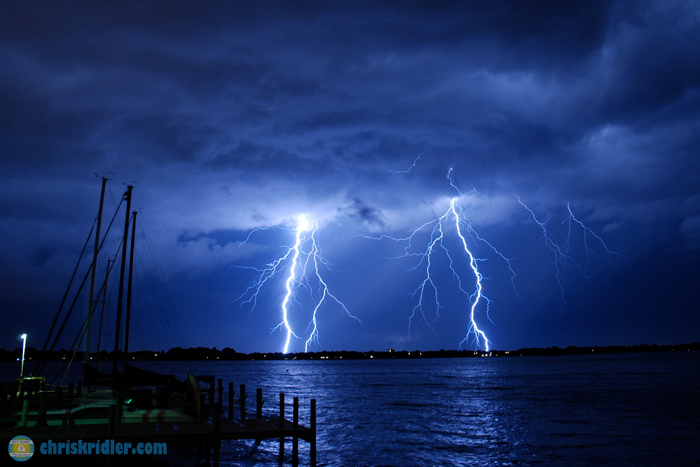
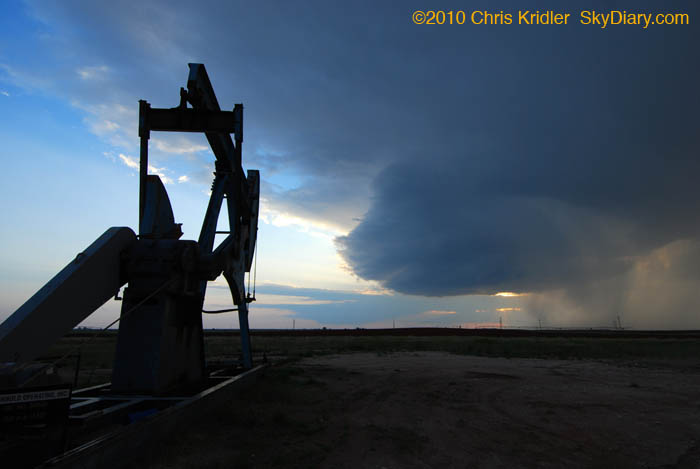
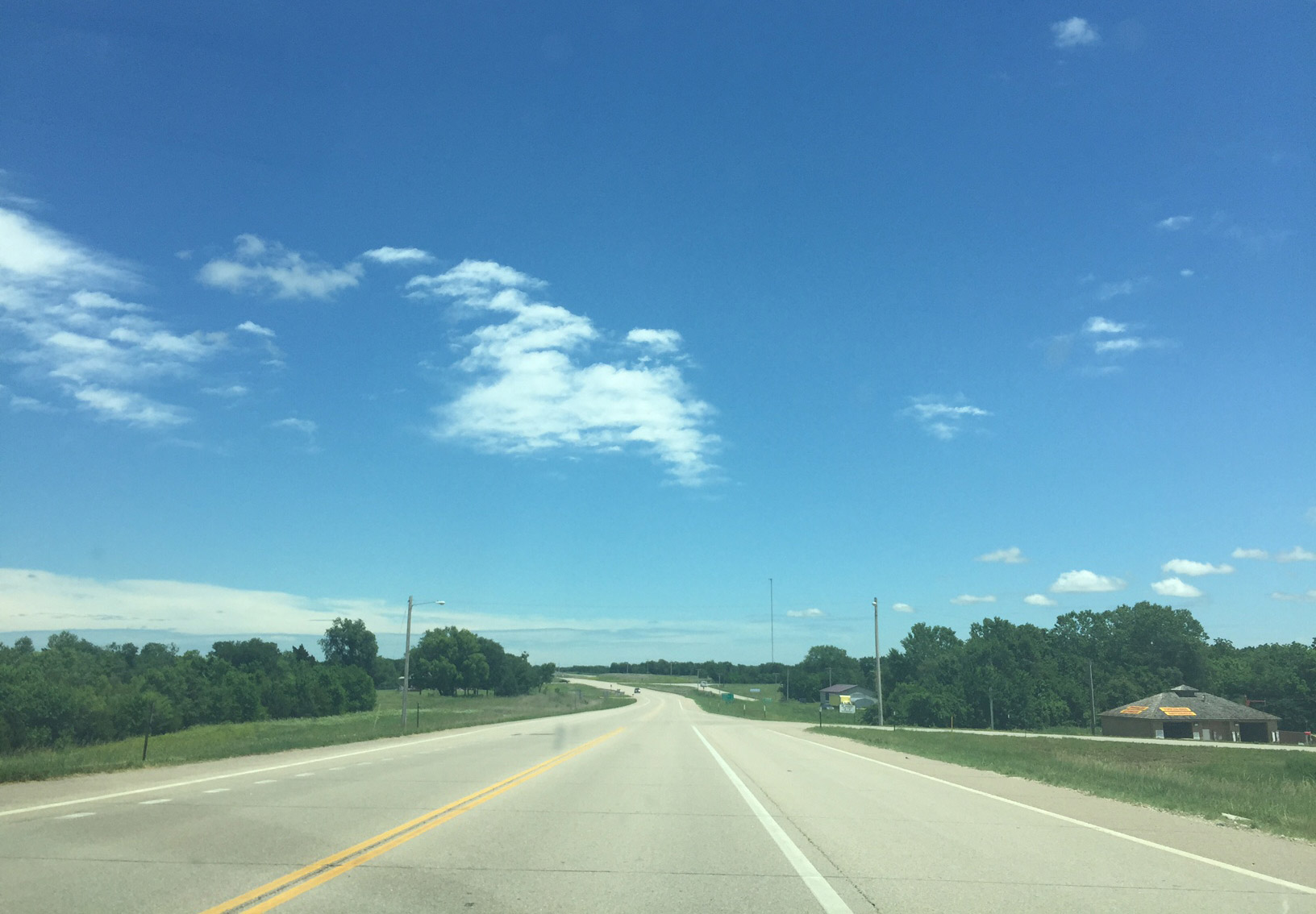
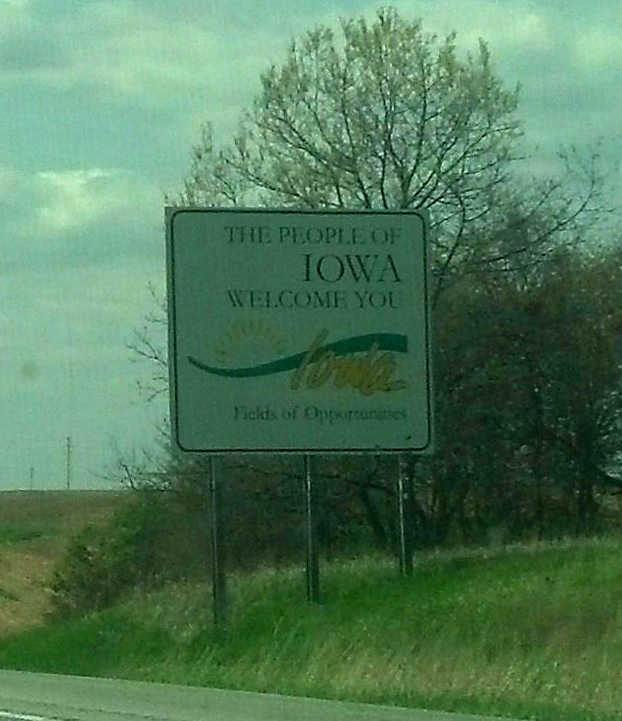
Great article. Really enjoyed getting inside Chris’s brain. What an amazing eye (and lens) to capture those beautiful pictures of nature. WOW! I also love the Wizard of Oz (wrote down all the words to the movie when I was in the 3rd grade) and have to say that I LOVE Chris’s license plate. Not to mention, that is a great pic of Chris…you look lovely, darling!
Thanks for this. Great work.